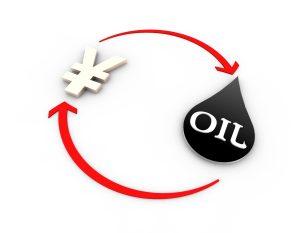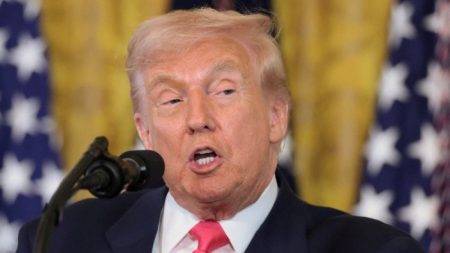French markets rallied and the euro climbed against the dollar as investors bet that the far right could fall short of an outright majority despite its first-round victory in parliamentary election on Sunday.
Marine Le Pen’s Rassemblement National came top with 33.2 per cent of the vote, ahead of the leftwing New Popular Front on 28 per cent and President Emmanuel Macron’s Ensemble alliance on 22.4 per cent.
France’s blue-chip Cac 40 index rose 2.7 per cent at the open on Monday while the euro gained 0.5 per to $1.077, its strongest level since mid-June.
“The result is probably better than feared, but not as good as the status three weeks ago pre-elections,” said Mohit Kumar, an analyst at Jefferies.
The RN’s victory on Sunday was a political earthquake in France and projections suggest it will still win the most seats in the run-off. But its vote share combined with allies was lower than some opinion polls predicted last week.
The gap between benchmark French and German 10-year borrowing costs, seen as a barometer for the risk of holding France’s debt, narrowed on Monday to 0.74 percentage points, after last week hitting the highest level since the Eurozone debt crisis in 2012.
France’s centrist and leftwing parties agreed to limited electoral co-operation on Sunday evening to try to block the far right from taking power. They are racing to decide whether to pull candidates out of hundreds of election run-offs to avoid splitting the anti-RN vote.
Ensemble and NFP candidates who finished third in their district are now under intense pressure to withdraw and avoid dividing the anti-RN vote in the election’s second round on July 7.
The first round produced more than 300 three-way run-offs, according to Financial Times calculations, an unprecedented number, although the final figure will depend on how many candidates drop out. The second round line-up must be decided by Tuesday.
Macron’s prime minister, Gabriel Attal, who faces being ousted from his post, said in an address: “The lesson tonight is that the extreme right is on the verge of taking power. Our objective is clear: stopping the RN from having an absolute majority in the second round and governing the country with its disastrous project.”
According to FT calculations, with nearly all districts counted the RN finished first in 296 constituencies out of 577, while the NFP led in 150 and Ensemble in 60. There will be about 65 constituencies with the RN and NFP in two-way run-offs. A party needs 289 seats for a majority.
By Sunday night all the parties in the leftwing NFP — from the far-left La France Insoumise to the more moderate Socialists, Greens and Communists — said they would drop out of races where their candidate was in third place.
However parties in Macron’s Ensemble alliance issued slightly different guidance, creating confusion.
Macron’s Renaissance party said it would make case-by-case decisions based on whether a leftwing candidate was “compatible with republican values”, but did not specifically exclude LFI.
Former prime minister Édouard Philippe said his Horizons party would instruct candidates to withdraw only in contests with no LFI representative. “I consider that no vote should be given to candidates of the RN or LFI, with whom we differ, not only on programmes but on fundamental values,” Philippe said.
Armin Steinbach, professor of law and tax at HEC Paris business school said that a “relative majority for the RN, not an absolute one, is the most likely outcome next week”.
“If France is threatened by market turmoil, the RN — unlike the far left — will be able to adapt very quickly because it is less ideological in economic policy than in identity policy,” he said.
French stock and bond markets tumbled after Macron called snap elections three weeks ago as investors fretted about a possible far right victory or political gridlock with populist forces dominating parliament after the July 7 run-off vote.
In previous second-round elections, French voters have often acted to create a so-called front républicain — backing candidates they would otherwise reject to lock out the RN. But it remains to be seen whether such voting customs still work with the far right in the ascendancy.
Socialist party chief Olivier Faure criticised Macron and recalled that leftist voters had twice helped him beat the RN to the presidency. “It remains confused, too confused from a president who has benefited from your votes in 2017 and 2022,” Faure told an NFP rally.
In a sign that Macron’s camp was trying to woo new allies, Attal announced that he would suspend a reform of the unemployment system due to take effect on Monday. It had been rejected by the left because it cut the time during which claimants could get benefits.
Le Pen said on Sunday that the first-round results had “practically erased” Macron’s centrist bloc. “The French have expressed their desire to turn the page on seven years of a government that treated them with disdain,” she told supporters in her constituency in Hénin-Beaumont, northern France.
If the RN wins a majority, Macron would be forced into an uncomfortable power-sharing arrangement, with Le Pen’s 28-year-old protégé Jordan Bardella as prime minister.
There have been three instances of such a “cohabitation” in France since 1958 but never involving parties and leaders with such contrasting views.
Mathieu Gallard, a researcher from polling group Ipsos, said whether the RN won an outright majority would depend mainly on the strength of the front républicain and how many leftwing and centrist voters made it a priority to counter Le Pen’s party.
“Things remain quite open,” he said. “There could be an outright majority for the RN or a weaker result that would not allow them to form a government.”
Steeve Briois, a senior RN official, dismissed the idea that tactical manoeuvres or voting advice would stop them from winning.
“[That] the other parties should call for an anti-RN front — it actually just annoys people and motivates them to vote for us,” he told the FT in Hénin-Beaumont. “The glass ceiling, the idea of a front républicain — that does not work any more.”
Read the full article here














